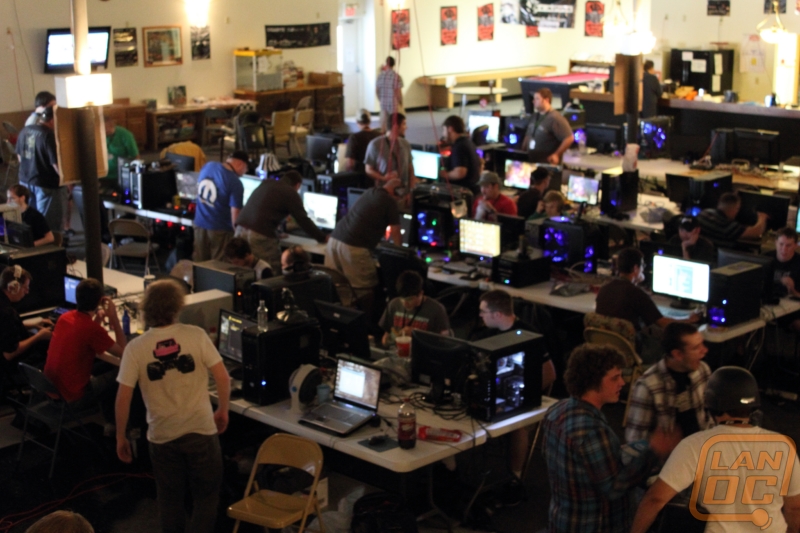What to look for in equipment
The equipment you pick out is just as important as how you lay everything out. By now you should have an idea of the number of ports required for your table switches and backbone, now it’s time to discuss what kind of equipment you will need for each of those. As I mentioned before, if you have a slow backbone you are dead in the water, so let’s start there. First I will explain what you should be looking for and then I will tell you about what we have gone with.
Backbone
For the most important switch in your network, this will obviously be your most expensive switch. You can get away in most situations with an un managed switch but I have always preferred to go managed on the backbone to be able to monitor traffic from table to table. This will help you pin point any issues quickly if you have network slowdowns. Being able to do this quickly is especially important when you are in the middle of a tournament.
Next we need to figure out what speed ports we will need. With this being the backbone its recommended that you go with a full gig switch even if you aren’t planning on running full gigabit to each seat.
The last thing that is important to look at is Total Switching Capacity. Total Switching Capacity means how much data can the switch handle at once, with this being a backbone switch you are looking for this number to be at minimum what the total number of ports can transfer. So 24 ports multiplied by 2000 (one gig each way for full duplex), 48000 Mb/s or 48Gb/s. It highly unlikely that you will ever need to use even half of that capacity. But it gives you a nice buffer preventing you from running the switch at capacity.
Table Switches
Table switches are a little less important when compared to the backbone, but it’s still important to know what to look for. Just like the backbone its important first to know how many ports you will need, something you should have already figured out when planning your table layout. Once you have decided on that you will need to decide on 100Mb or full Gigabit switches at each table. The cost difference between the two has gone down considerably but full gig still costs twice as much as a full 100Mb. Something else to consider is 100Mb to each seat with one gigabit backbone connection. You will find a lot of deals on this configuration on eBay as company’s upgrade to full gigabit. Unless you are going full gig, that would be my recommendation. Of course going full gigabit is still the way to go for the best performance to each attendee.
Once you have decided on gig or no gig you still do have to consider the same questions that we asked before of the backbone switch. The good thing is they are all a little less important. It’s still nice to look at total switching capacity, but there is no chance that every port is going to be running at full capacity. Unless each person on your network is running multiple SSD’s in raid 0.
Unlike the backbone going with a managed switch at this level will cost more than it’s worth. It would be nice to be able to break down how much bandwidth each person is using, but unless you are running 100Mb to each person it’s unlikely that you will ever need to pinpoint one person on network traffic (internet traffic is a different story all together). The truth is if you can afford to buy a managed switch to prevent anyone from over loading your 100Mb connection, you would be much better off using that same money to go with full Gigabit.
A few other things to consider when looking at your table switches that doesn’t matter on the backbone is switch size and power usage. The power usage isn’t as important, but when you’re trying to get every last watt out of a buildings power capacity, saving a little on the switch can be helpful when totaled across all of your switches. The size of the switch can be important on the table because, typically your switch is going to go right on the table in between attendee’s, The less room it takes up, the more room they will have. Full rack mounted switches take up a LOT of room when that person may only have a 3 foot area to work with in the first place.


